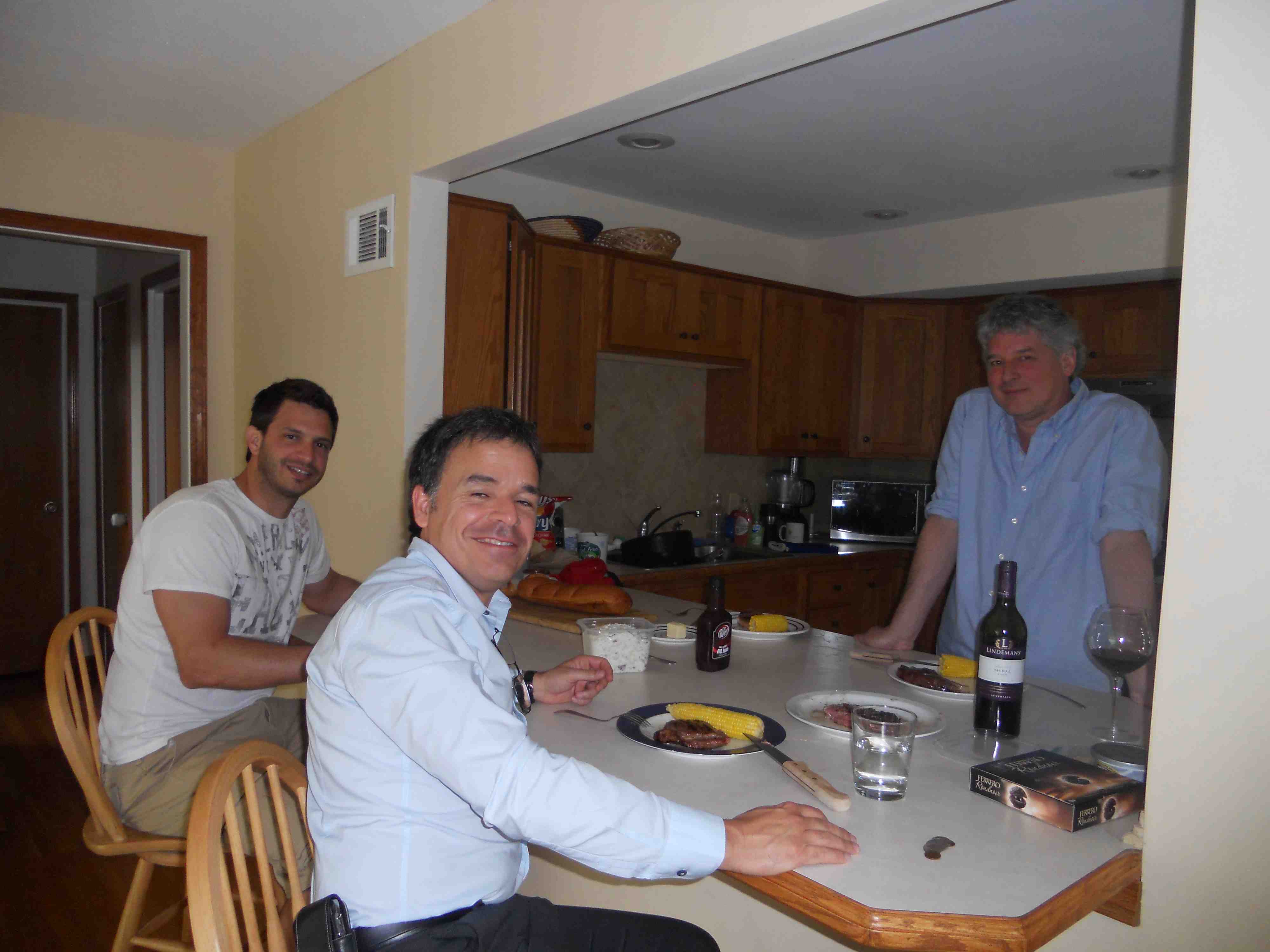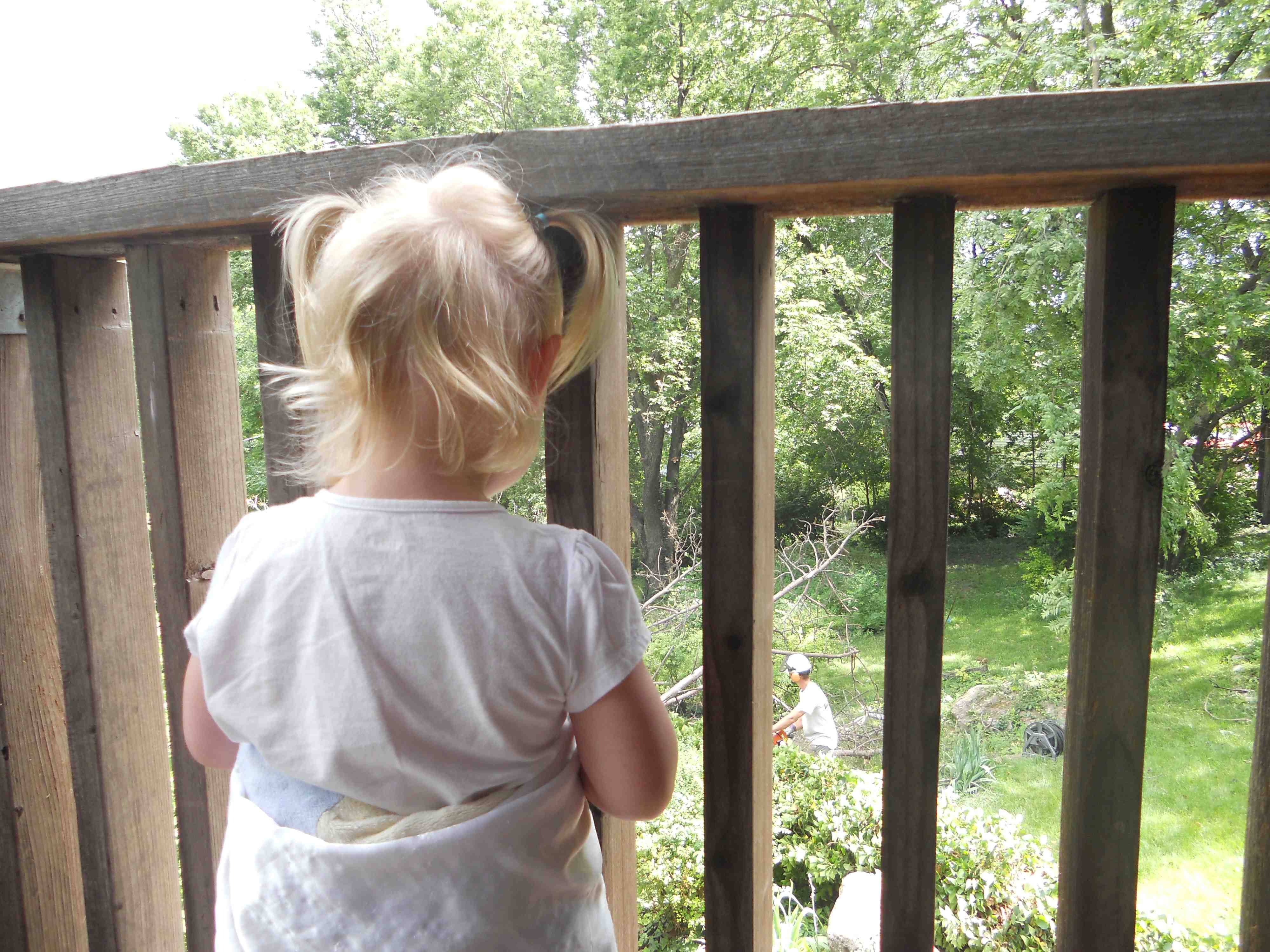When Disney Frank decided to become Wal-Mart Frank, I asked him, why?
 He said something along the lines of, I could influence food safety for a few million people that visit Disney each year, or influence food safety for hundreds of millions that shop at Wal-Mart.
He said something along the lines of, I could influence food safety for a few million people that visit Disney each year, or influence food safety for hundreds of millions that shop at Wal-Mart.
I’ve always had a lot of respect for that.
Anyone can be an arm-chair critic, there’s few that walk the talk (and the line).
I’m one of a handful of people that have spoken with groups at both Disney and Wal-Mart over the years, and Frank and I don’t always agree, especially on how best to reach consumers, but there’s much respect.
Wal-Mart has 140 million shoppers in its stores in the U.S. every week. How does it ensure that its food supply is safe and healthy for all of those customers?
At The Wall Street Journal’s recent Global Food Forum, the Journal’s Sarah Nassauer spoke with Frank Yiannas, vice president of food safety at Wal-Mart, for insight into the question. Here are edited excerpts of the conversation.
NASSAUER: Give us a sense of the scale of what you do.
YIANNAS: One hundred forty million Americans shop in our stores every week. We’ve got around 11,000 stores across the world, tens of thousands of food suppliers, over two million employees.
So we have a very carefully thought out food-safety plan that centers around five core initiatives. We work very hard to reduce risk very early in the food system. No. 2, you have to reduce the retail risk factors. When you have stores that actually prepare and handle food, make sure those procedures are right. Three, regulatory compliance. No. 4, manage emerging food issues. No. 5, driving global consistency, because consumers world-wide should have access to safe food.
 When we make a food decision, our first question is always, “Is it safe?” We then also believe in affordability. And then, is it sustainable? That’s about making sure we can meet today’s needs and ensuring that we don’t hinder future generations’ ability to have safe, affordable food.
When we make a food decision, our first question is always, “Is it safe?” We then also believe in affordability. And then, is it sustainable? That’s about making sure we can meet today’s needs and ensuring that we don’t hinder future generations’ ability to have safe, affordable food.
NASSAUER: One thing from a merchandising standpoint that Wal-Mart is working on is trying to have a wider selection of small producers, organic food, sourcing locally. How does that change what you do? Is it harder to do food safety for 40 farms in Illinois versus a big producer in China?
YIANNAS: What we’ve adopted is a scalable food-safety approach. We were the first retailer in the U.S. to require our suppliers to adhere to something called the Global Food Safety Initiative benchmark standards. They’re very comprehensive standards that often exceed regulations in countries that we operate in.
But we realized that if you were a small, local supplier you wouldn’t be able to comply with that. So we took the standards and broke it down, so we have a scalable food-safety approach for small and developing suppliers.
NASSAUER: One thing you mentioned when we talked earlier was that what you think about is evolving. The perception of safety is something you’re thinking about more and more as new technologies become an issue. Tell us a little bit how that has evolved at Wal-Mart.
YIANNAS: We have to keep the customer in mind. When you make risk-management decisions, you just don’t make it from a scientific point of view. We start off with, what is the real risk?
We will never knowingly do something that’s risky.
Second, we ask ourselves, what is the regulatory requirement? We will never knowingly do something that doesn’t comply with law. But a third question is, what is the perceived risk?
Food-safety professionals and food professionals have been very dismissive of perceived risk. That probably wasn’t wise. We have to understand perception.
When I was growing up, food used to unite us. Hot dogs, apple pie and Chevrolet. It united us as a people.
I realize society is polarized, but I think food shouldn’t divide us. You have people who say, “I want global food,” and some are like, “No, I want local food.” You have some people say, “Hey, I want natural food.” “I want processed food.”
My last name is Yiannas, pronounced appropriately. I’m of Greek descent. The Greeks have been processing food for a long time. I love my Greek yogurt. It’s processed. I love my Greek cheese. It’ s processed. I love my Greek wine. Processed. I love my bread. Processed.
We as leaders need to change and shift the conversation, and let food unite us.




.jpeg) chance that you’ve come across one. A wal-creature is anyone shopping at Wal-Mart wearing outlandish or ridiculous clothing, whether it be too tight or blindingly bright. A wal-creature could be Mimi from Drew Carey. Wal-creatures may be encountered in real life, but more often are photographed and put up on one of my favorite sites:
chance that you’ve come across one. A wal-creature is anyone shopping at Wal-Mart wearing outlandish or ridiculous clothing, whether it be too tight or blindingly bright. A wal-creature could be Mimi from Drew Carey. Wal-creatures may be encountered in real life, but more often are photographed and put up on one of my favorite sites:  I’m pretty surprised that some of these people leave their house dressed as they are. Secondly, I can’t believe how many of these people have been photographed in the store with animals. There aren’t too many Wal-Marts around without a food section, so there’s a very good chance that these animals have accompanied their owners on that side of the store. Peopleofwalmart.com includes photos of wal-creatures with
I’m pretty surprised that some of these people leave their house dressed as they are. Secondly, I can’t believe how many of these people have been photographed in the store with animals. There aren’t too many Wal-Marts around without a food section, so there’s a very good chance that these animals have accompanied their owners on that side of the store. Peopleofwalmart.com includes photos of wal-creatures with  In my opinion, the photo with the macaw is the most disturbing. The caption says it best: “Oh no Ms., it’s cool, I love stepping in parrot sh*t whenever I’m buying celery. Nothing says sanitary like a parrot in the produce section…” I cannot believe this lady got away with bringing a giant Salmonella factory into the produce section of a grocery store. I’m a big proponent of service dogs – dogs only. This bird’s rectum is pointed precariously close to the cases of strawberries. Unfortunately the manager at the store couldn’t have done anything about it (whether he was aware of the bird in the store or not). Laws are in place to protect disabled people with service animals from being asked to leave stores. Managers are not even allowed to ask what their disability is (which isn’t overly apparent in this situation) and disabled patrons are not required to show documentation for their service animals. I wish this could be regulated somehow because I have suspicions that the bird isn’t a real service animal, instead it’s just a pet.
In my opinion, the photo with the macaw is the most disturbing. The caption says it best: “Oh no Ms., it’s cool, I love stepping in parrot sh*t whenever I’m buying celery. Nothing says sanitary like a parrot in the produce section…” I cannot believe this lady got away with bringing a giant Salmonella factory into the produce section of a grocery store. I’m a big proponent of service dogs – dogs only. This bird’s rectum is pointed precariously close to the cases of strawberries. Unfortunately the manager at the store couldn’t have done anything about it (whether he was aware of the bird in the store or not). Laws are in place to protect disabled people with service animals from being asked to leave stores. Managers are not even allowed to ask what their disability is (which isn’t overly apparent in this situation) and disabled patrons are not required to show documentation for their service animals. I wish this could be regulated somehow because I have suspicions that the bird isn’t a real service animal, instead it’s just a pet..png)
 annual meeting of the Washington State Horticultural Association in Wenatchee on Monday, Dec. 7
annual meeting of the Washington State Horticultural Association in Wenatchee on Monday, Dec. 7.jpg) Anyone can be a poser and critic; Frank actually tries to make change.
Anyone can be a poser and critic; Frank actually tries to make change.
(1).jpg) This is why people are comfortable buying expired foods at discounted prices from
This is why people are comfortable buying expired foods at discounted prices from